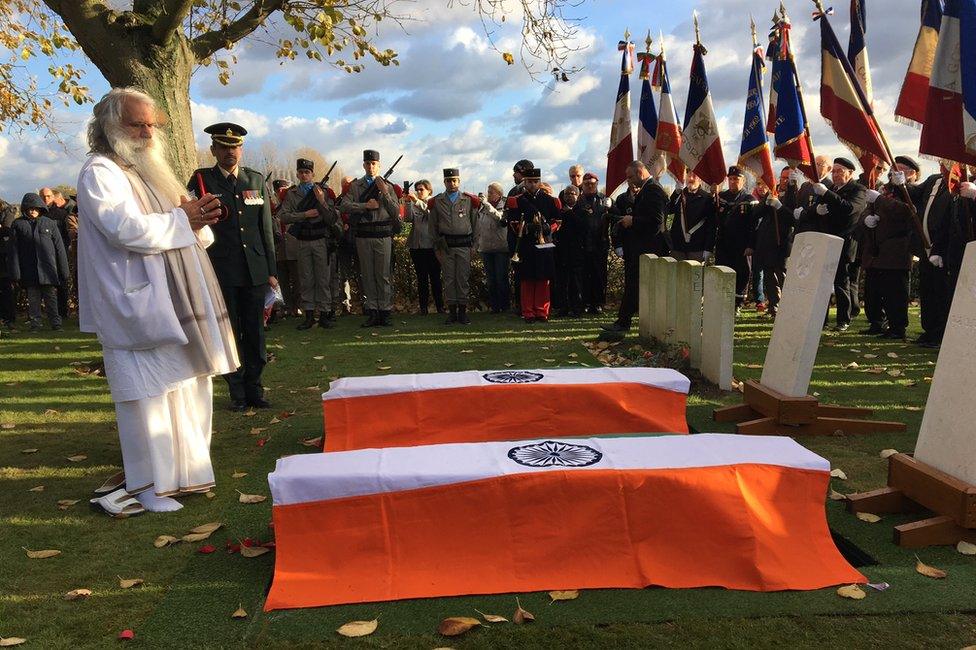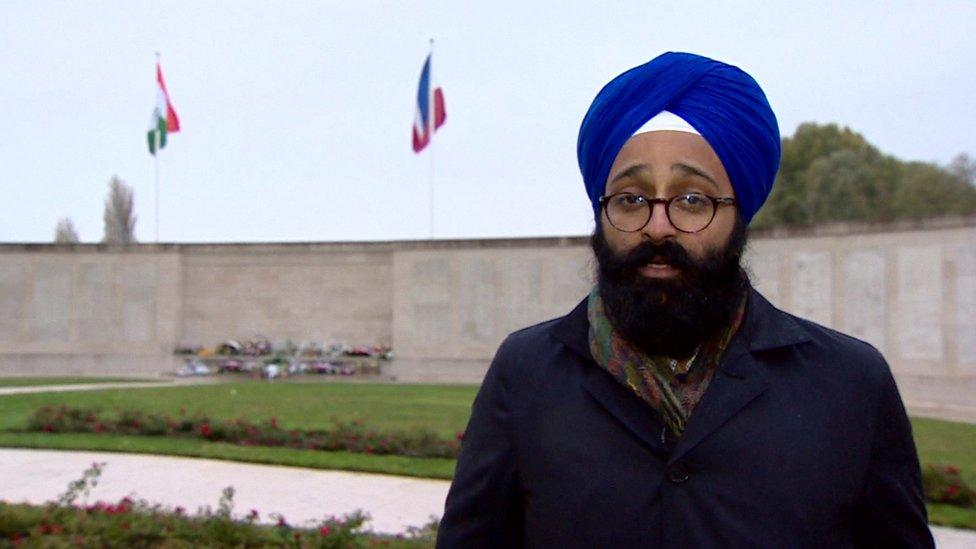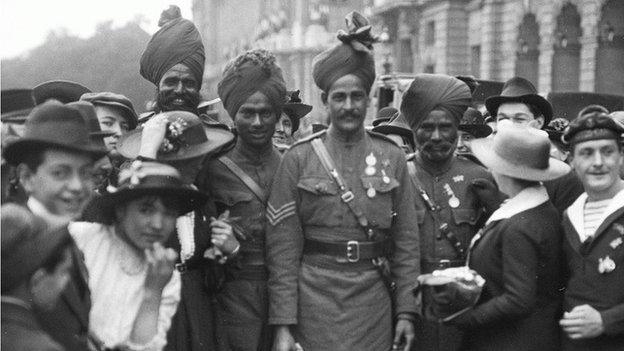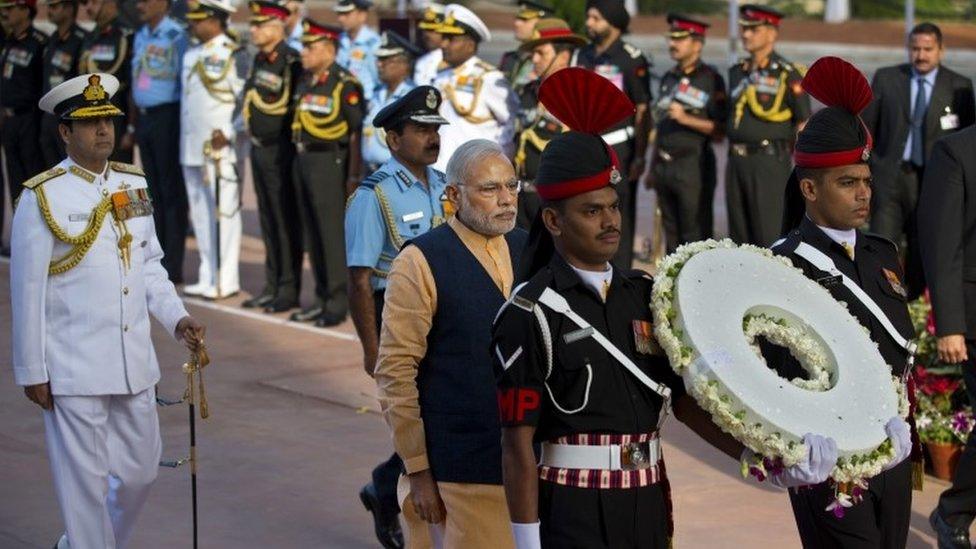Indian WW1 soldiers laid to rest after French mystery
- Published

The discovery of human remains near a small town in northern France last year sparked a search that quickly spread half-way across the globe. The two men, it turned out, were Indian soldiers who died on French battlefields more than 100 years ago during World War One.
They were finally laid to rest this month, in a ceremony especially poignant for the Indian diaspora in France.
A crowd gathers quietly at a small cemetery in Laventie. Many of them are of Indian origin and have travelled from across France, undeterred by the cold weather and distance - both physical and from events that took place so many years ago.
A Hindu priest chants prayers in front of two flag-draped coffins, as Indian and French military personnel stand in respect.
For Indians who now call France home coming here wasn't just about honouring those who gave their lives in war. It is about their own place in history.
"This is very important for the Indian diaspora, because it gives us a link to history," says Ranjit Singh, a proud member of the French-Sikh community.
"It reminds us that a century ago - some soldiers came here [from India]. It isn't just something written in the books. We can feel it, we can see it today."

Garhwali riflemen in France, 1915
Some 1.3 million Indian soldiers served in the World War One and more than 70,000 died in places like northern France - where decisive battles were fought.
A few kilometres away from Laventie, in Neuve Chapelle, a memorial lists the names of many Indian soldiers who died fighting for the British Empire.
Nalinee Goojha, who lives in Paris, told me she was thinking of the soldiers' mothers, "whose children came to fight a war here in France, where I now live, and they never saw their children again".
She adds: "I live in France and these people fought for us. We are here, in France, which is a free country, because of them."
Remarkably, the soldiers were identified by badges found on their bodies. After a century buried in the French mud, the number "39" was still legible when the bodies were found.
That stands for the 39th Royal Garhwal Rifles - an infantry regiment raised during the time of the British Raj. Its history goes back to 1854.

A badge found with the remains
The regiment was one of few in the Indian army to have two battalions, and both were sent to Europe with the Garhwal Brigade - part of the 7th (Meerut) Division - in the early part of the World War One where they fought on the Western Front.
Later they took part in the Mesopotamia campaign in the Middle East.
The Garhwal Rifles - as they are now called - were incorporated into the Indian army after independence and the regiment was contacted by the French authorities after the remains were found and their origins identified.

Ranjit Singh travelled from Paris to attend the ceremony
Brig Indrajit Chatterjee, Commandant of the Garhwal Rifles Regimental Centre, travelled from India for the ceremony. Two bagpipers from the regiment also played.
The fallen soldiers were being cremated and laid to rest with full honours, Brigadier Chatterjee said.
The Indian soldiers saw some of their fiercest fighting in the battle of Neuve Chapelle in March 1915. The troops, both Indian and British, were commanded by Sir Douglas Haig.
Rifleman Gabbar Singh Negi won the Victoria Cross and his grandson, who is now a serving Indian Army officer, was present at the ceremony in Laventie.
Laventie Military Cemetery and other graves in the area are maintained by the Commonwealth War Graves Commission.
"What we try to do always is to reunite the men that are found today with the men they fought alongside 100 years ago. In this case, more than 100 years ago," says Liz Sweet from the commission.
"In the cemetery where they were buried today, there was a sizable pocket of Indian men commemorated and they were placed alongside those men."
Before leaving France, the Indian army representatives filled two urns with soil from the area - a piece of the ground on which so many of their regiment fought and died.
- Published23 March 2015

- Published17 June 2015

- Published2 July 2015

- Published10 March 2015
